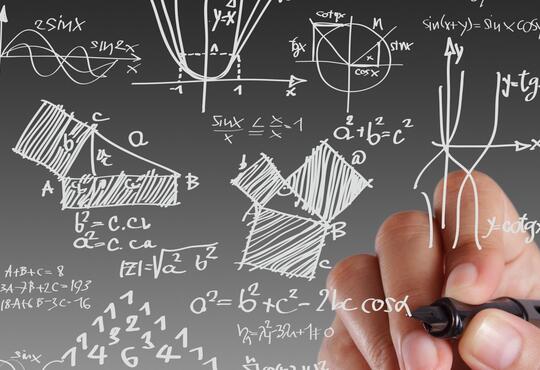Problem
Two identical hard, smooth, spherical space ships abandoned by Captain Kirk in outer space are at rest and just touching each other at one common point. A third identical ship, piloted by Spock coasts in along the common tangent as shown. Just before it simultaneously collides with the two abandoned ships, the third ship has velocity of +20 km/sec in the obvious direction. What is the velocity of the third ship just after collision? (Assume no rocket thrust or time warp, assume only elastic collision forces, be liberal with use of symmetry but conservative with momentum and energy.) (Answers in km/sec).

(a) +10
(b) +4
(c) 0
(d) -4
(e) -10
Solution
(d) -4
Here is another elastic collision problem, involving three objects, but it is in two dimensions and needs a bit more thought. Read the comments in brackets again if you missed the clues. Both momentum and kinetic energy are conserved and remember that momentum is a vector quantity. Let’s call the original direction of Spock’s velocity the positive X-axis, and the orthogonal line through the centres of the other two will be our Y-axis. Symmetry ensures that the collision forces applied to these two ships by the third one will lie in the X-Y plane. The smooth skins ensure that these forces will also be normal to the surfaces and hence pass through the centres of the ships. This fixes the directions of the applied forces and hence the directions of the final velocities as shown below. )(It is true that any deformation could destroy the three-fold symmetry, but we also said the ships were hard, which makes deformation negligible.)







